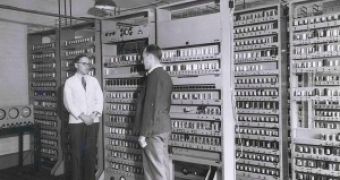Many things have changed since the very first electronic calculators made their appearance, but those interested in witnessing the early days of computing can now rejoice as EDSAC, one of the first computers in the world, is to be rebuilt at the National Museum of Computing in Bletchley Park.
As Bit-tech reports, the replica was commissioned by the UK-based Computer Conservation Society, and, once completed, it will take its rightful place among other classic computing devices that made their home out of the Bletchley Park Codebreaking Museum.
Constructed by Sir Maurice Wilkes and Bill Renwick, at the University of Cambridge Mathematical Laboratory, the EDSAC (Electronic Delay Storage Automatic Calculator) ran its first programs on 6 May 1949, and was designed in order to help researchers and staff perform complex calculations.
The whole system measured 5 meters by 4 meters and was comprised of 12 racks that contained over 3000 vacuum tubes.
As with most other early computers, input was handled through punched tape, its mercury delay lines, which were used for memory, consisting of 1024, 18-bit locations, although only 512 locations were initially implemented.
All these “impressive” specifications made EDSAC capable of processing between 650 and 714 operations per second, depending on the source code being run.
Sadly, few parts of the original computer remain, but computer conservationists believe they will be able to source all the parts required for building a working replica of the EDSAC, except for the mercury delay lines, as the use of this metal has been restricted.
The build is expected to take three years to complete and will cost around £250,000, funding being assured by a consortium of companies, led by Acorn co-founder Hermann Hauser.
Together with the EDSAC, Bletchley Park also holds a replica of the Colossus electromechanical computer, which was used to break the German Enigma cipher during the 2nd World War.

 14 DAY TRIAL //
14 DAY TRIAL //